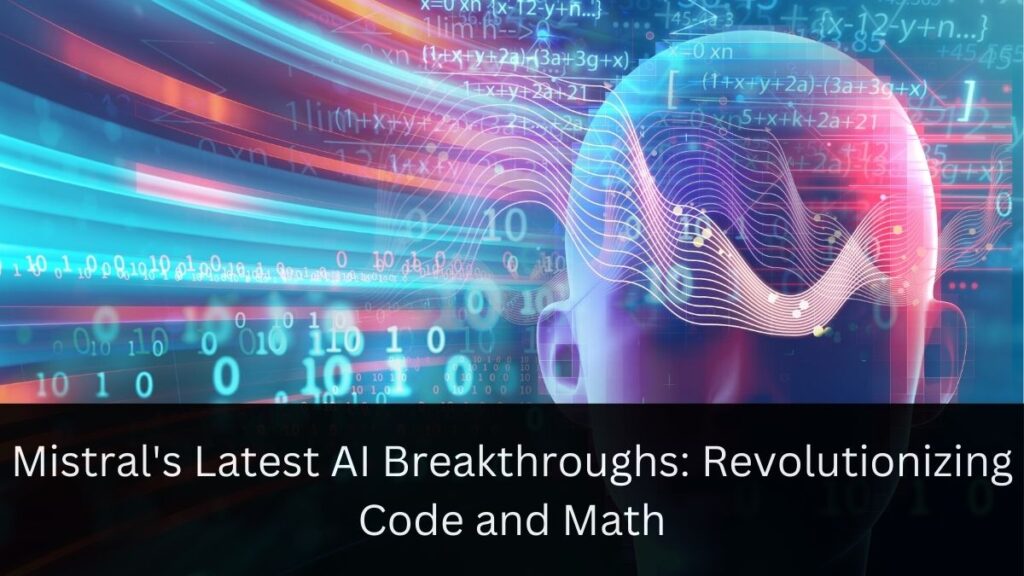In the ever-evolving landscape of artificial intelligence, French startup Mistral has once again captured the attention of the tech world. With the release of two groundbreaking models, Codestral Mamba and Mathstral, Mistral is pushing the boundaries of what’s possible in code generation and mathematical reasoning. Let’s dive into these exciting developments and explore their potential impact on the AI ecosystem.
The Rise of Mamba: A New Era in AI Architecture
Before we delve into Mistral’s new offerings, it’s crucial to understand the foundation upon which they’re built. The Mamba architecture, developed by researchers in late 2023, represents a significant leap forward in AI model design. Unlike the ubiquitous transformer architecture, Mamba simplifies attention mechanisms, potentially leading to faster inference times and expanded context windows.
As someone who’s been following AI developments closely, I can’t help but marvel at how quickly new architectures are being adopted and implemented. It feels like just yesterday when transformers were the be-all and end-all of language models. Now, we’re witnessing the dawn of a new era with Mamba.
Codestral Mamba: Redefining Code Generation
Speed and Efficiency Unleashed
Mistral’s Codestral Mamba 7B is not just another code generation model; it’s a testament to the power of innovative architecture. With its ability to handle inputs of up to 256,000 tokens – double that of OpenAI’s GPT-4 – Codestral Mamba is pushing the envelope of what’s possible in AI-assisted programming.
As a developer, I can’t help but get excited about the possibilities this opens up. Imagine working on a complex project and having an AI assistant that can understand and generate code for entire modules, not just snippets. The potential for increased productivity is staggering.
Benchmarking Success
In the world of AI, benchmarks are king, and Codestral Mamba doesn’t disappoint. Mistral’s tests show that it outperforms rival open-source models like CodeLlama 7B, CodeGemma-1.17B, and DeepSeek in HumanEval tests. These results are not just numbers on a page; they represent real-world improvements that developers can leverage in their daily work.
Open Source and Accessible
One of the most commendable aspects of Mistral’s approach is their commitment to open source. Codestral Mamba is available under an Apache 2.0 license, allowing developers to modify and deploy it as needed. This openness fosters innovation and allows the broader community to build upon and improve the model.
Mathstral: Empowering STEM with AI
A Specialized Model for Mathematical Reasoning
While Codestral Mamba focuses on code, Mathstral 7B turns its attention to the world of mathematics and scientific discovery. Developed in collaboration with Project Numina, Mathstral represents a specialized approach to AI in STEM fields.
As someone who struggled with complex mathematical concepts in school, I can’t help but wonder how a tool like Mathstral might have changed my educational experience. The potential for AI to make advanced mathematics more accessible and understandable is truly exciting.
Impressive Performance and Versatility
Mistral claims that Mathstral outperforms every model designed for math reasoning, achieving “significantly better results” on benchmarks with more inference-time computations. With a 32K context window, Mathstral can handle complex mathematical problems and long chains of reasoning.
The versatility of Mathstral is particularly noteworthy. Users can employ it as-is or fine-tune the model for specific applications, opening up a world of possibilities in fields ranging from physics to engineering.
The Bigger Picture: Mistral’s Growing Influence
Mistral’s latest releases are not isolated events but part of a larger strategy to compete with AI giants like OpenAI and Anthropic. With a recent $640 million Series B funding round and a valuation approaching $6 billion, Mistral is positioning itself as a major player in the AI space.
The company’s approach of offering models on an open-source basis, combined with investments from tech behemoths like Microsoft and IBM, suggests a future where AI development is more collaborative and accessible.
Implications for the Future of AI
As we look to the horizon, the releases of Codestral Mamba and Mathstral raise some intriguing questions about the future of AI:
- Will specialized models like these become the norm, replacing more general-purpose LLMs?
- How will the open-source nature of these models impact the AI ecosystem and commercial offerings?
- What new applications and innovations will emerge as developers and researchers leverage these tools?
Explore and Innovate
The release of Codestral Mamba and Mathstral represents more than just technological advancement; it’s an invitation to explore, innovate, and push the boundaries of what’s possible with AI. Whether you’re a seasoned developer, a mathematics enthusiast, or simply someone curious about the future of technology, these models offer a glimpse into a world where AI is more specialized, efficient, and accessible.
As we stand on the cusp of this new era in AI, I encourage you to dive in, experiment with these models, and share your experiences. The future of AI is not just being shaped by large corporations but by a community of developers, researchers, and enthusiasts. Your contribution, no matter how small, could be the spark that ignites the next big breakthrough in AI.
So, what will you create with Codestral Mamba or discover with Mathstral? The possibilities are limitless, and the journey promises to be exhilarating. Let’s embrace this new chapter in AI together and see where it takes us.

